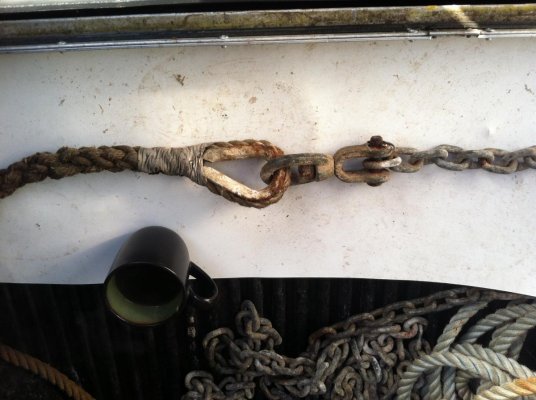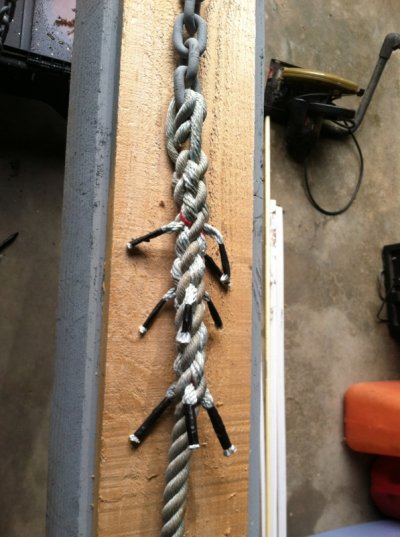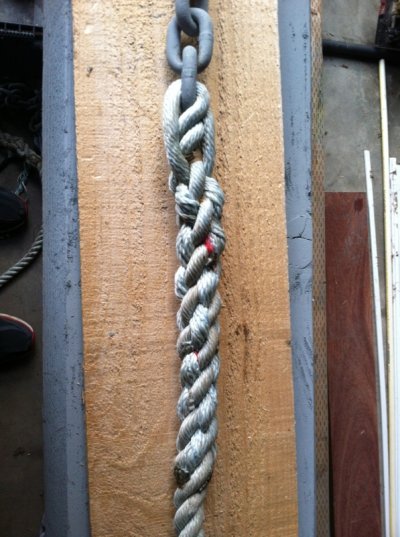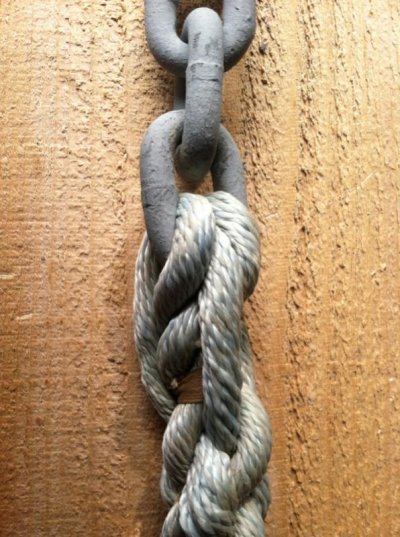Russ Borman
Veteran Member
Ok I'm new to all this having just purchased are Roughwater a few months back. So before even trying to anchor for the 1st time, I decided to pull all the chain and rope out and see what kind of condition they were in. Here's what I found.

I had a hard time just getting this up out off the anchor locker, let alone how this is going to go around the windless. So my question is whats the best splice for chain to rope,one like this where the rope is weaved up the chain.
![warpchainf[1].jpg warpchainf[1].jpg](https://www.trawlerforum.com/data/attachments/44/44566-87b838775f27f3ae05f1507f979b2f4b.jpg)
Or the one that seams most popular is one
![img-8695-thumb[1].jpg img-8695-thumb[1].jpg](https://www.trawlerforum.com/data/attachments/44/44567-a9c878d56113ec795b16169b47135d19.jpg)
And if this one would you splice it with a taper to help making the bend around the windless.

I had a hard time just getting this up out off the anchor locker, let alone how this is going to go around the windless. So my question is whats the best splice for chain to rope,one like this where the rope is weaved up the chain.
![warpchainf[1].jpg warpchainf[1].jpg](https://www.trawlerforum.com/data/attachments/44/44566-87b838775f27f3ae05f1507f979b2f4b.jpg)
Or the one that seams most popular is one
![img-8695-thumb[1].jpg img-8695-thumb[1].jpg](https://www.trawlerforum.com/data/attachments/44/44567-a9c878d56113ec795b16169b47135d19.jpg)
And if this one would you splice it with a taper to help making the bend around the windless.




